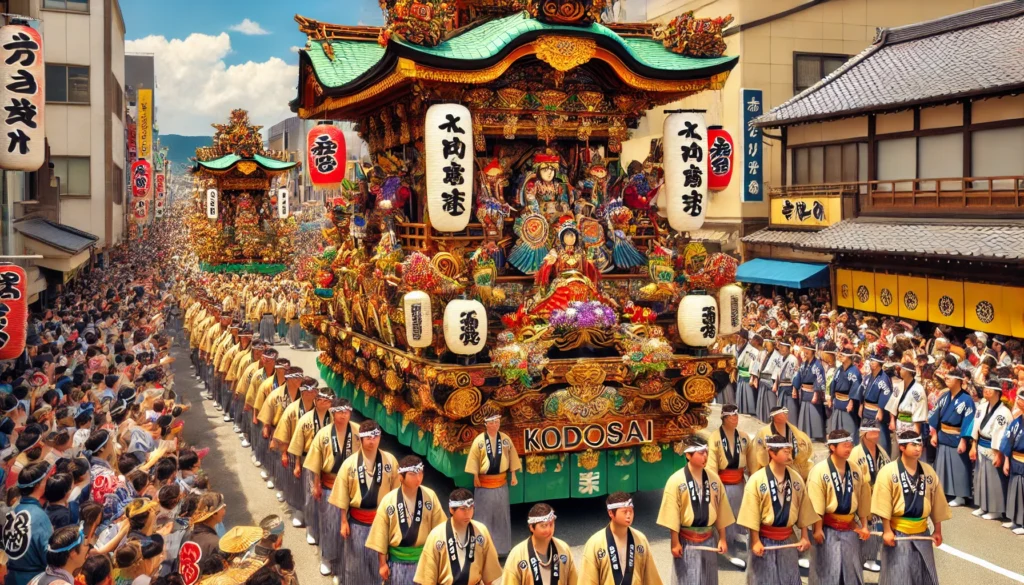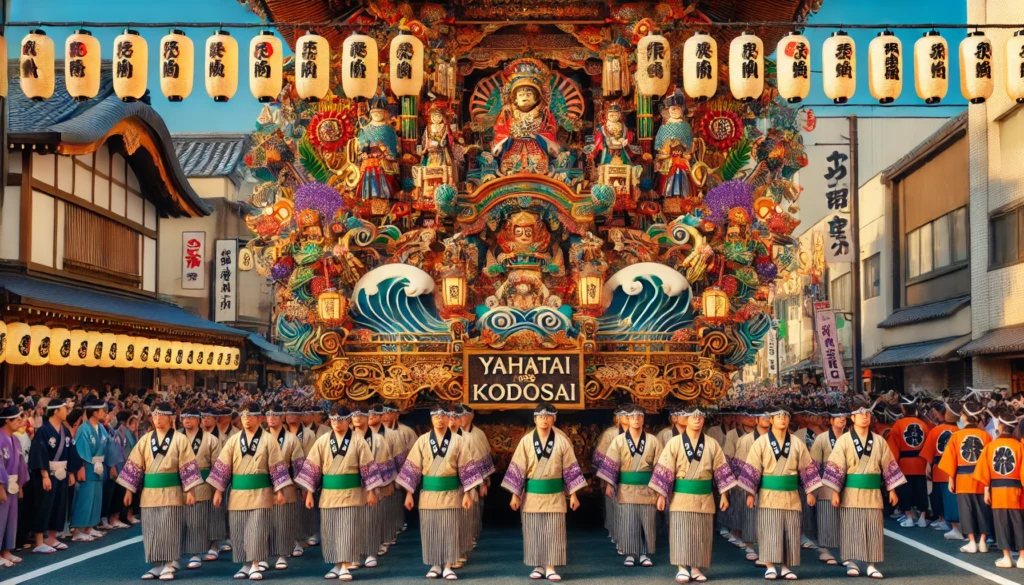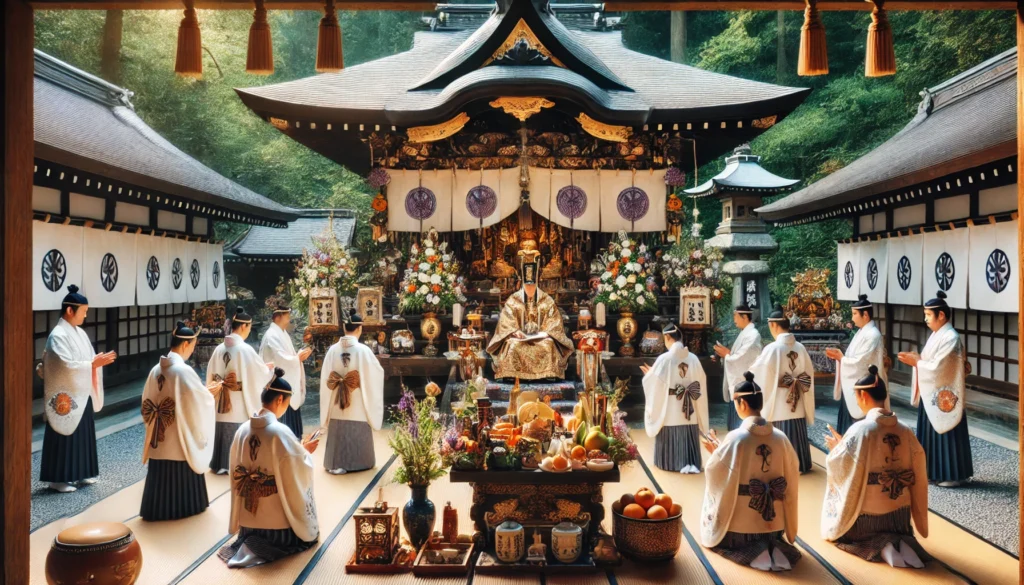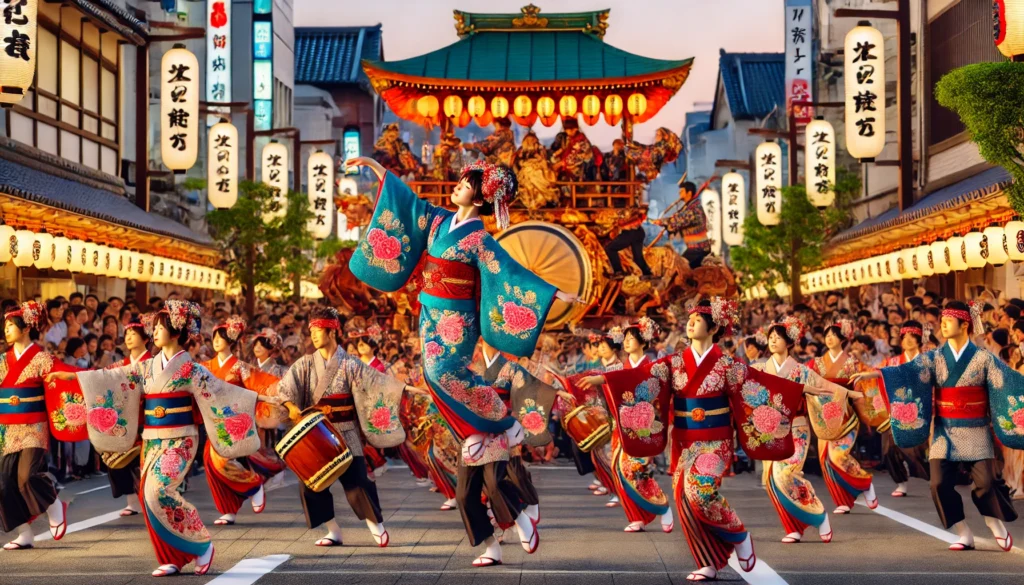Yahatai Kodosai Festival: A Complete Guide to Japan’s Cultural Celebration

Introduction to Yahatai Kodosai
Yahatai Kodosai is one of Japan’s most enchanting and culturally rich festivals, held annually in Fukuoka, the bustling city in the Kyushu region. This festival is a unique blend of spirituality, music, dance, and community engagement, celebrated to honor the region’s agricultural cycles and local traditions. Unlike many modern festivals, Yahatai Kodosai offers an immersive experience into Japan’s ancient cultural practices, with a strong emphasis on Shinto beliefs, wooden float processions, and vibrant celebrations.
The festival typically takes place in the summer, drawing thousands of visitors from both Japan and abroad. Visitors to Yahatai Kodosai are treated to a spectacular display of traditional Japanese performances, including ceremonial music and the intricate movements of participants in the famous float processions. This guide will take you on a detailed journey through the history, rituals, and modern celebrations of Yahatai Kodosai, helping you understand why this event is so special.
Historical Origins of Yahatai Kodosai
The Beginning of Yahatai Kodosai
The origins of Yahatai Kodosai can be traced back centuries, with roots deeply embedded in ancient Shinto practices. The festival is believed to have started as a way of honoring the gods and spirits associated with agriculture, which is a central part of life in Fukuoka. Local farmers, who would gather to celebrate a successful harvest, began to organize processions and rituals to express their gratitude to the deities who governed the land and nature.
Over time, the festival grew in significance, and it evolved into the grand celebration it is today. It is said that the “Yahatai” (the term for the large wooden floats used in the festival) were initially created to represent various deities and protect the local communities during seasonal transitions.
The Role of Shinto and Spirituality
The spiritual foundation of Yahatai Kodosai is primarily based on Shintoism, Japan’s indigenous religion. Shinto beliefs emphasize the importance of nature, spirits, and deities in everyday life, and Yahatai Kodosai serves as a ritualistic expression of these principles. Throughout the festival, rituals involving prayers, blessings for good harvests, and respect for nature’s cycles are carried out in temples and on the streets.
The Spiritual Significance of Yahatai Kodosai
Shinto Rituals and Ceremonies
One of the most important elements of Yahatai Kodosai is its connection to Shinto rituals. These ceremonies are performed to invoke divine protection and blessings, especially for the agricultural community. The festival opens with traditional prayers, where local priests and community leaders ask for the gods’ favor. Offerings of food, flowers, and sacred symbols are presented to the deities, and participants often carry sacred items during the procession as a mark of respect.
The festival’s most iconic ceremony involves the “Yahatai,” large floats decorated with intricate carvings, symbols, and offerings. As they move through the streets, chants and songs are performed by the participants, creating a spiritual and cultural atmosphere that is both mesmerizing and educational for visitors.
The Role of the Community
The festival is not just about the performance but also about community involvement. Every year, hundreds of locals come together to participate in Yahatai Kodosai, each person playing a specific role. From building the floats to participating in dances and rituals, everyone has a part to play in ensuring the festival’s success. This communal effort is what makes the event so special and memorable.
Yahatai Kodosai Festival Celebrations and Activities
Traditional Music, Dance, and Performances
A defining feature of Yahatai Kodosai is its captivating music and dance performances. Traditional Japanese instruments, such as taiko drums and shamisen, provide the backdrop for energetic dances that accompany the float processions. The music sets the tone for the festival, evoking a sense of reverence, joy, and celebration.
The dances, which are performed by both men and women in colorful traditional costumes, are choreographed to honor the gods and celebrate the agricultural cycle. Visitors can even join in the dance, learning steps that have been passed down through generations.
Wooden Float Processions: Symbolism and Structure
The centerpiece of Yahatai Kodosai is the wooden float procession, where massive, beautifully crafted floats are paraded through the streets. These “Yahatai” floats are adorned with religious symbols, paintings, and decorations that represent different deities or historical events. The floats are typically manned by teams of locals who pull and guide them along the streets, singing and chanting as they go.
Each Yahatai float has a specific design and significance, with some representing local gods, while others symbolize historical events related to the region’s heritage. These processions are more than just a spectacle; they are a way of ensuring divine blessings for the coming year.
Modern-Day Yahatai Kodosai: A Cultural Evolution
From Tradition to Contemporary Celebrations
While the core of Yahatai Kodosai remains deeply rooted in tradition, the festival has evolved to reflect modern-day interests. Today, visitors can enjoy a fusion of the old and new, with technology playing a role in bringing the festival to a global audience. Live-streams of the float processions and dance performances are often broadcast on social media platforms, allowing people worldwide to witness the magic of Yahatai Kodosai.
Integration of Tourism and International Appeal
The festival’s popularity has grown significantly over the years, with tourists from all over the world flocking to Fukuoka to experience the unique cultural celebration. As a result, the event has expanded to cater to international visitors, offering guided tours, food stalls with global offerings, and even multilingual signage to help non-Japanese speakers fully immerse themselves in the festivities.
Planning Your Visit to Yahatai Kodosai
Key Dates and Festival Timings
Yahatai Kodosai is celebrated during the summer, typically in the month of July or August. The exact dates may vary, so it’s important to check the official festival website for the latest schedule. The festival spans several days, with different events occurring on each day.
Tips for Visitors
When attending Yahatai Kodosai, it’s important to plan ahead. Here are some tips to help you make the most of your visit:
- Arrive Early: The float processions attract large crowds, so arriving early ensures a good spot for viewing.
- Wear Comfortable Shoes: Expect to do a lot of walking and standing.
- Respect the Traditions: Yahatai Kodosai is a spiritual and cultural celebration. Be mindful of the customs and rituals observed during the event.
- Bring Cash: While some stalls accept cards, many local vendors prefer cash payments.
Where to Stay
Fukuoka offers a variety of accommodations, ranging from budget hotels to luxury resorts. If you’re attending Yahatai Kodosai, it’s recommended to book your stay early, as rooms fill up quickly during the festival period.
FAQs About Yahatai Kodosai
When did Yahatai Kodosai begin?
Yahatai Kodosai has roots going back several centuries, with its origins tied to agricultural celebrations and Shinto practices.
What is the significance of the “Yahatai” floats?
The “Yahatai” floats are symbolic representations of gods, historical events, and local spirits. They are the highlight of the festival’s processions.
Can tourists participate in Yahatai Kodosai?
Yes, visitors can participate by joining in the dances and attending various cultural performances, although certain traditional rituals are reserved for locals.
Is there an entrance fee for Yahatai Kodosai?
Most of the events and processions are free to attend, but some special performances or guided tours may have an entrance fee.
How can I learn more about Shinto traditions at the festival?
There are dedicated tours and events at Yahatai Kodosai that explain the Shinto rituals and their significance in the festival.
Conclusion: Why Yahatai Kodosai Should Be on Your Travel List
Yahatai Kodosai is not just a festival; it’s a celebration of Japan’s rich history, culture, and spirituality. Whether you are drawn to its vibrant processions, the powerful music and dance performances, or the community involvement, this festival offers an experience like no other. Its deep-rooted traditions make it a unique and must-visit event for anyone interested in Japanese culture. So, if you’re planning your next adventure to Japan, don’t miss the chance to immerse yourself in the magic of Yahatai Kodosai.
Recommended Articles:
Understanding the C ANSI Keyboard Decoder Function: A Complete Guide
Dwayne Khallique: A Visionary in AI, Machine Learning, and Technology Innovation
CS Nite-Beam Spotlightlight Model 901: The Complete Guide
Visore per Vedere TV a 100 Pollici: The Future of Personal Entertainment
Yahatai Kodosai Festival: A Complete Guide to Japan’s Cultural Celebration











